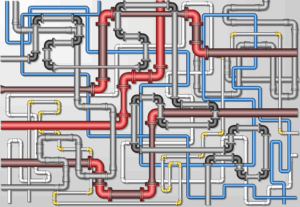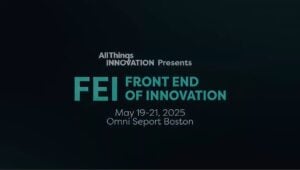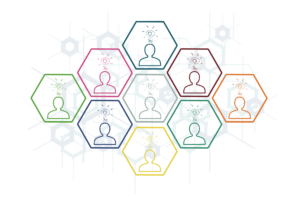What Motivates You?
Innovation might be a steppingstone to other organizational functions in the company or a person’s career. But for others, there might be a clear passion for innovation and the process, people and technology that make up the discipline.
Lisa Costello, Director and Head of Platform, Prologis Ventures, sees her passion for the innovation field, and the motivations of consumer behavior, as giving her an edge in the marketplace.
“I just love talking to people and trying to get down to what motivates them to exhibit certain behaviors. What makes them get up in the morning? What makes them do a good job at work? What makes them willing to buy a new product? What makes them interested in solving the world’s problems?” says Costello.
Identifying motivations behind people’s preferences and needs are, after all, a key part of how innovation can work successfully in a corporate setting. Anticipating these needs can drive new opportunities to innovate and new revenue growth.
Costello adds, “If you can figure out what motivates people and what gets them excited, then you can pitch new solutions that solve for their motivators. Being ahead of the pack is anticipating those problems before anyone else. If you can do that ahead of your competitors, ahead of the market, ahead of anyone else’s solution for your customer’s problems—then you are a step ahead. It’s not about constantly comparing yourself to the competition. It’s about solving for your customer’s problems better than anybody else, which will make your customers choose you every time.”
Thriving in Uncertainty
Curiosity has been a broad theme of our innovation best practices series. Some may view it as the bedrock of the capability, driving humans to new heights of creativity and inventiveness.
For Leslie Grandy, Lead Executive in Residence, University of Washington – Michael G. Foster School of Business, curiosity may guide us, but ultimately human behavior is so much more complex as far as what drives us to identify trends, adapt to changing circumstances, and thrive in uncertainty.
Grandy, who is author or Creative Velocity: Propelling Breakthrough Ideas in the Age of Generative AI, says, “My curiosity about how and why things work enables me to see connections that others might overlook. I am naturally drawn to emerging technologies and social trends, seeking to understand what defines their currency. Adaptability makes it easy for me to prefer mixing things up over sticking with routine ways of doing things. I have worked hard at viewing setbacks as opportunities to improve rather than as definitive roadblocks.”
Uncertainty is a topic not often talked about, yet it pervades the innovation community. That uncertainly may be corporate in nature, not to mention in the society and economy as a whole. The whole process of innovation has its zigs and zags, to be sure.
“I also have a bias to embrace and even welcome ambiguity,” says Grandy. “Innovation rarely follows a linear process, and creative breakthroughs often arise amidst uncertainty and failed experiments. I am someone who can flourish in open-ended environments rather than attempting to eliminate all uncertainty.”
Lastly, there is the nature of empathy. Opening oneself to other’s perspectives is part of being obsessed (in a good way) with the consumer.
“I am also inherently empathetic, which enables me to remain open to various perspectives and appreciate how others’ experiences can influence their values and needs,” she says.
Making Innovation a Priority
While curiosity and other creative traits might infuse the innovation mindset, Emil Georgiev, Vice President – Customer Experience Design, IKS Health, also emphasizes that innovation can play a key role in the company.
“It’s a significant role that can elevate an organization,” says Georgiev. “Somebody that’s ahead of the pack is able to institutionalize the innovation mechanism. There are a lot of things by which you can basically drive this. One of them is a relentless drive to understand your customer needs rather than just anticipate what they need. That’s a very fundamental source of innovation that can keep you ahead of the pack. Really understand your customer needs so that you can innovate in the most efficient way and in the areas that source the highest level of unmet needs.”
Beyond the consumer, for Georgiev, it’s worth noting that it is the structure of the corporation and the innovation discipline within it, that may hold the key to getting ahead of the pack.
He observes, “In addition to this, I would say having a structure that shares and prioritizes the front end of your product development—that involves innovation not as an afterthought, but as an active step. This may include the incorporation of design thinking. Of course, some of this depends on what industry or business you are in. But these are some of the components, on a structural level, that will keep an individual or an organization a step ahead.”
Pushing Brand Boundaries
Of course, when asked how to stay ahead of the pack, that might be on a personal level or from an organizational standpoint. Or perhaps even from a branding perspective.
For food and beverage innovation veteran Zeinab Ali, who recently retired after a career in senior research and development roles with brands like Campbell Soup Company, PepsiCo and Nabisco, it’s about fully immersing yourself in the culture.
Ali relates, “Whether technology or culture or people—I think it’s immersing yourself in your field. Let’s say if I make sodas. Immerse yourself in the soda world, everything that exists, not just the big guys but the small guys, even the adjacencies and products that are not quite soda. You’re always looking to adjacencies to adjacencies to adjacencies so at some point you grow your portfolio. Have that finger on the pulse of the consumer—what else are they doing with this soda? They’re consuming my soda with this other product, should I be making that other product as well?”
Whether it’s breakthrough innovation or more incremental innovation, Ali feels that an innovation practitioner should always be looking ahead and to push the boundaries.
“You’re constantly trying to extend your brand and understanding,” says Ali. “How much can you stretch the brand to the point that it’s not the product the consumer wants. When you get to that point, you have brand extensibility. How far can you push the brand before people say enough. You must understand how far your brand can stretch and then know that limitation. If you want to grow the business, what are the adjacencies that you should consider? You’re always looking for more of what else can the consumer consider me to deliver legitimately?”
Being forward-looking and having strategic and product foresight may also be a strength worth developing.
“Maybe the product extension is not here yet,” says Ali. “Maybe it’s five, six, seven, ten years down the road. Sometimes the organization is not there yet but as a product developer you must look ahead and anticipate.”
Video courtesy of Phil McKinney’s Innovation Studio
Contributor
-

Matthew Kramer is the Digital Editor for All Things Insights & All Things Innovation. He has over 20 years of experience working in publishing and media companies, on a variety of business-to-business publications, websites and trade shows.
View all posts

















































































































































































